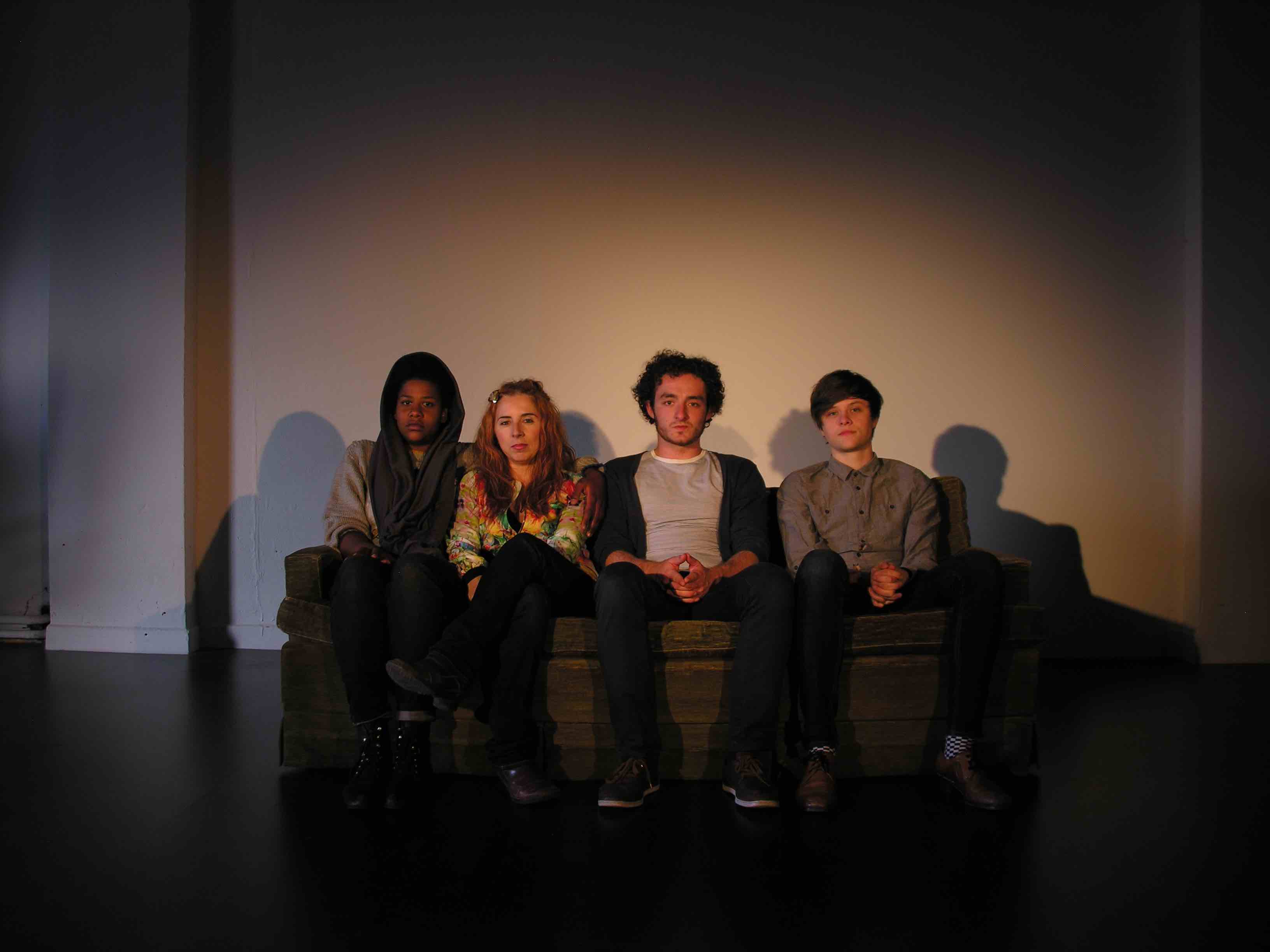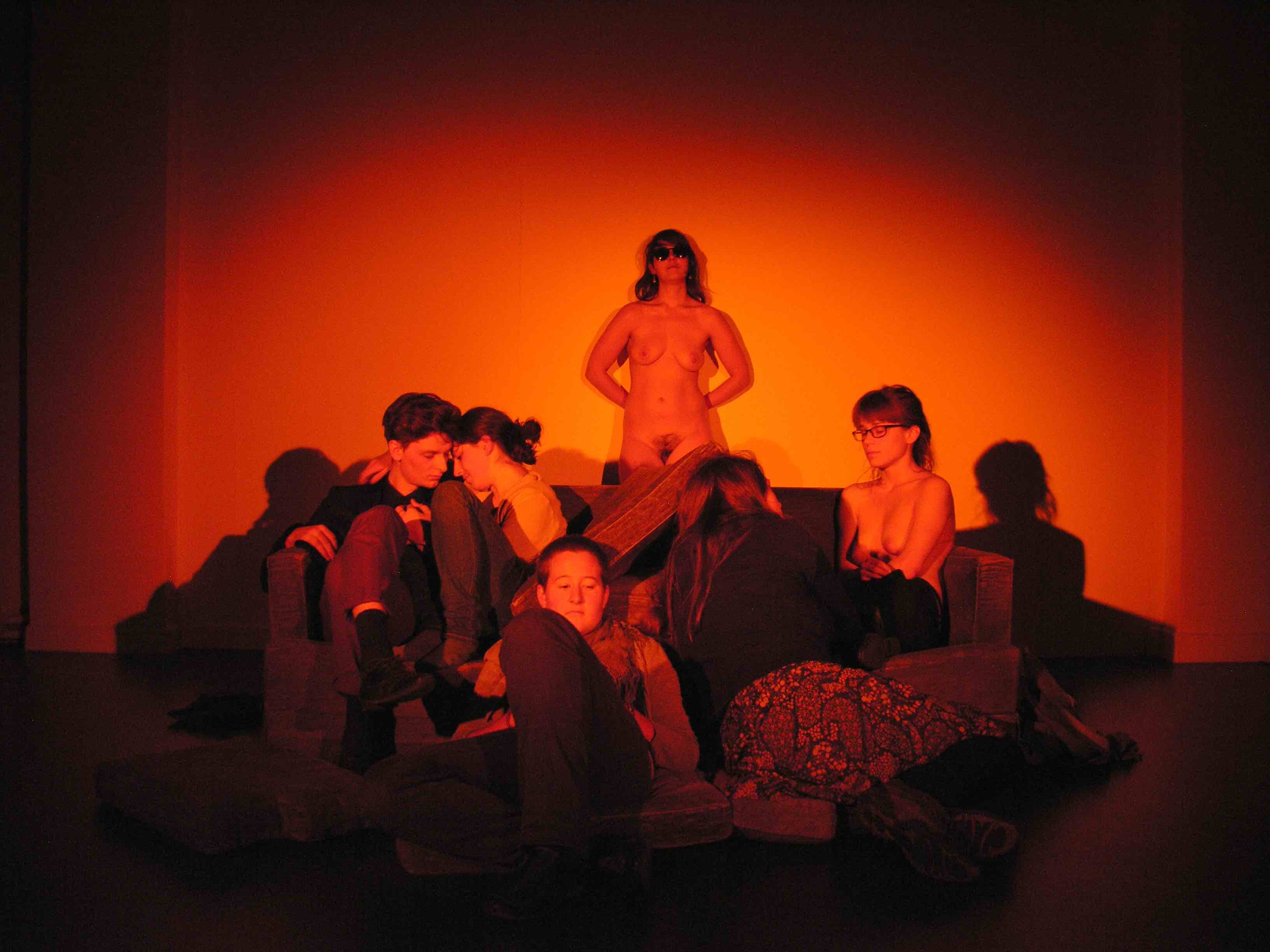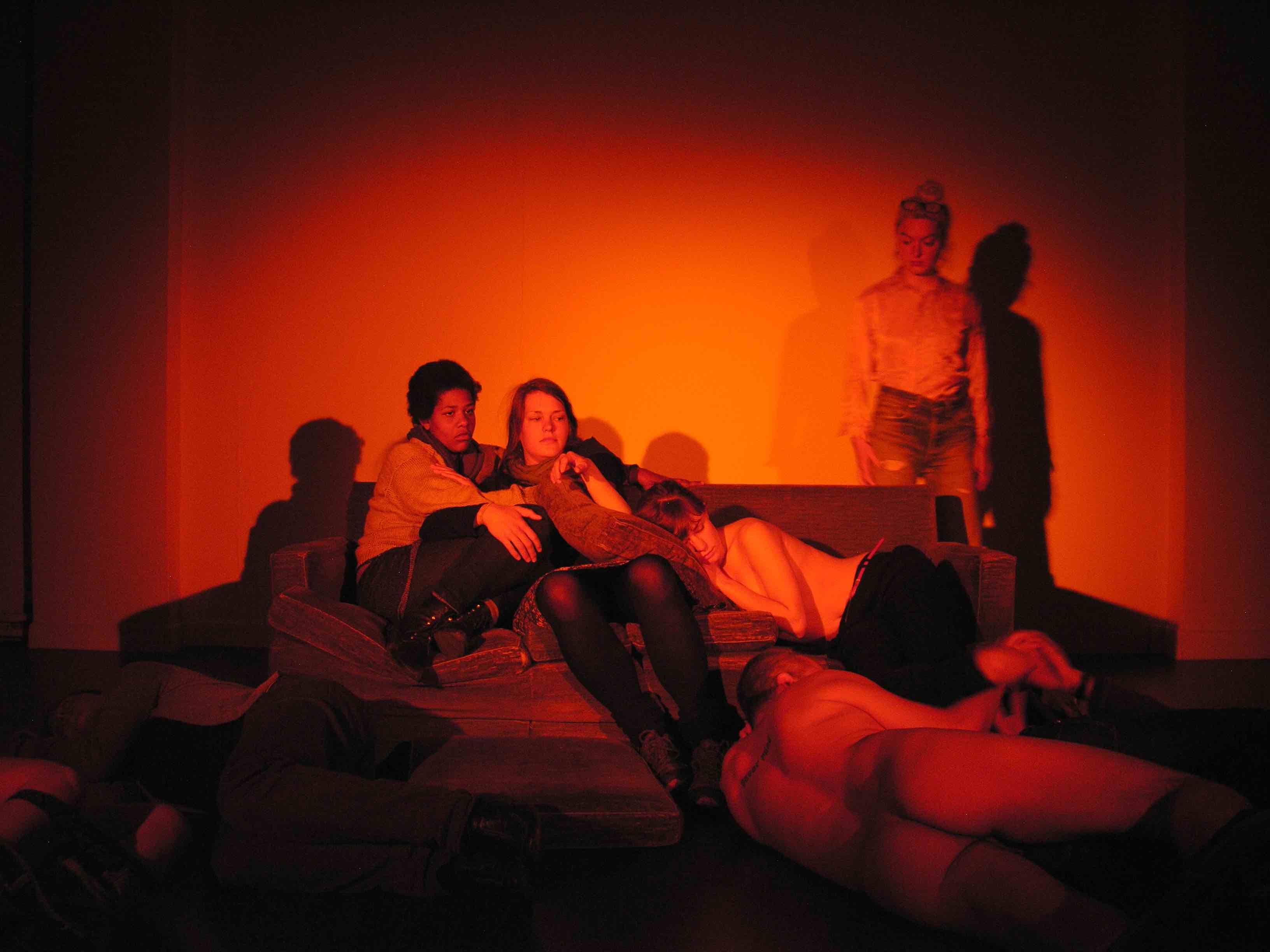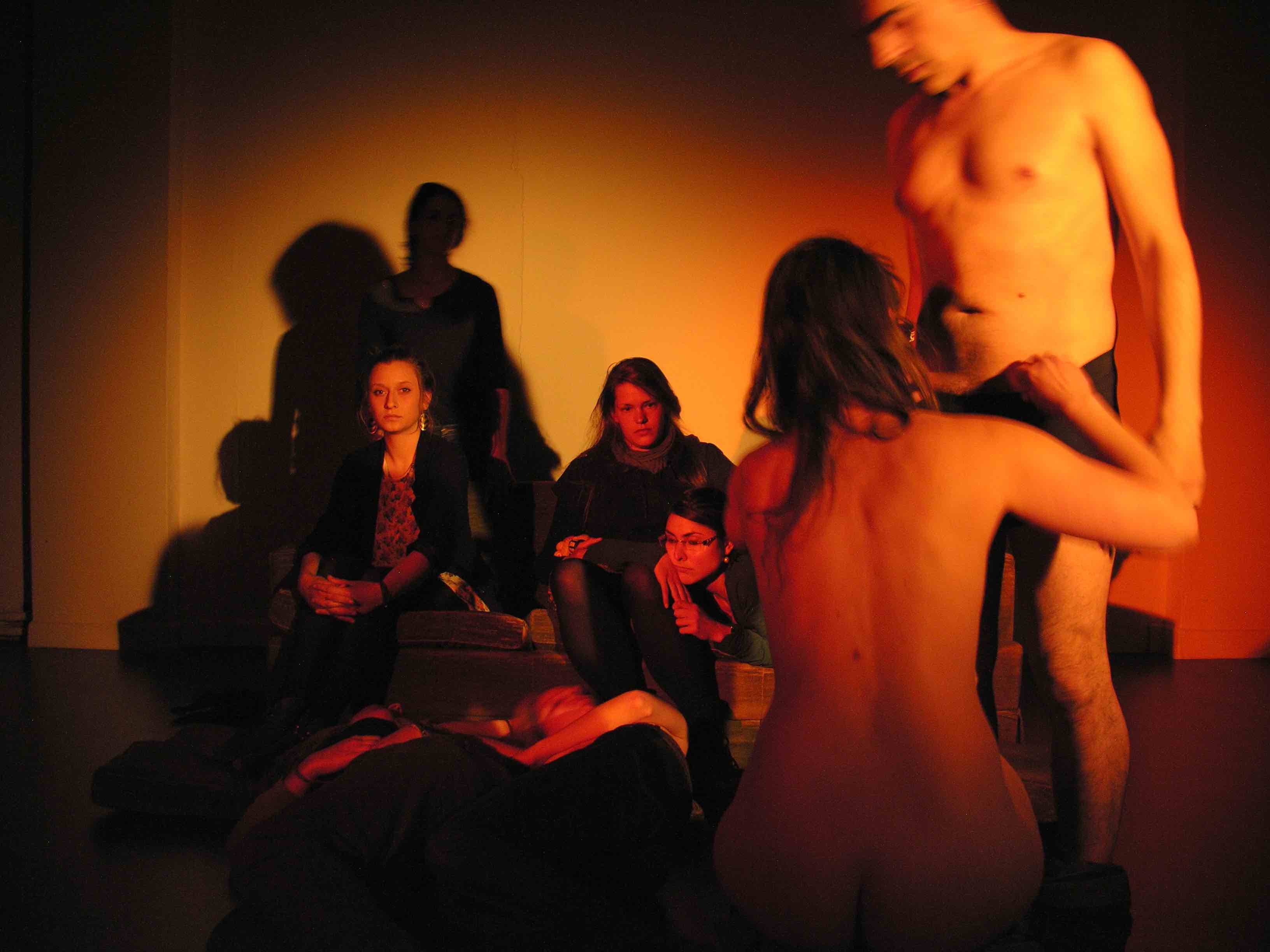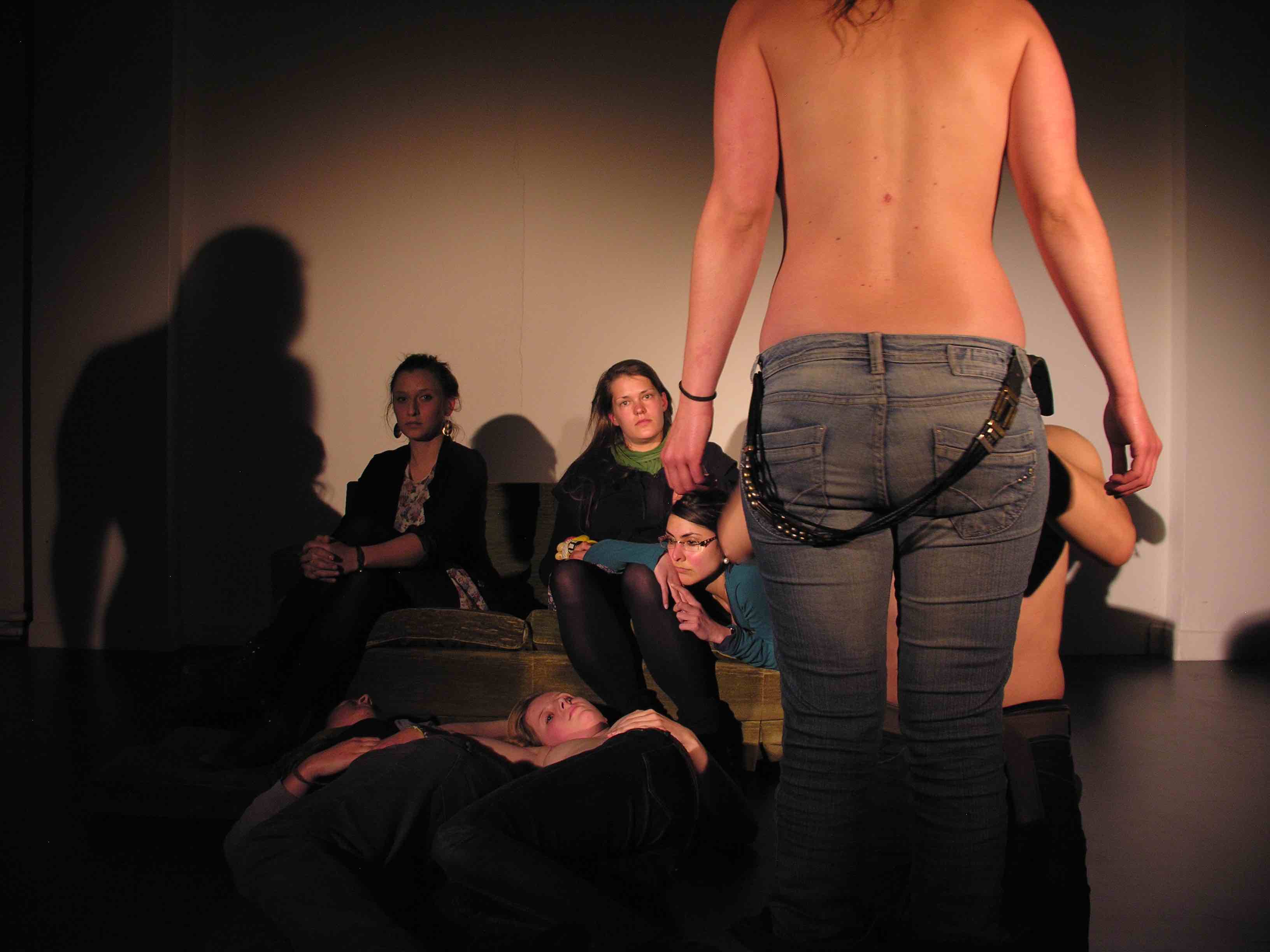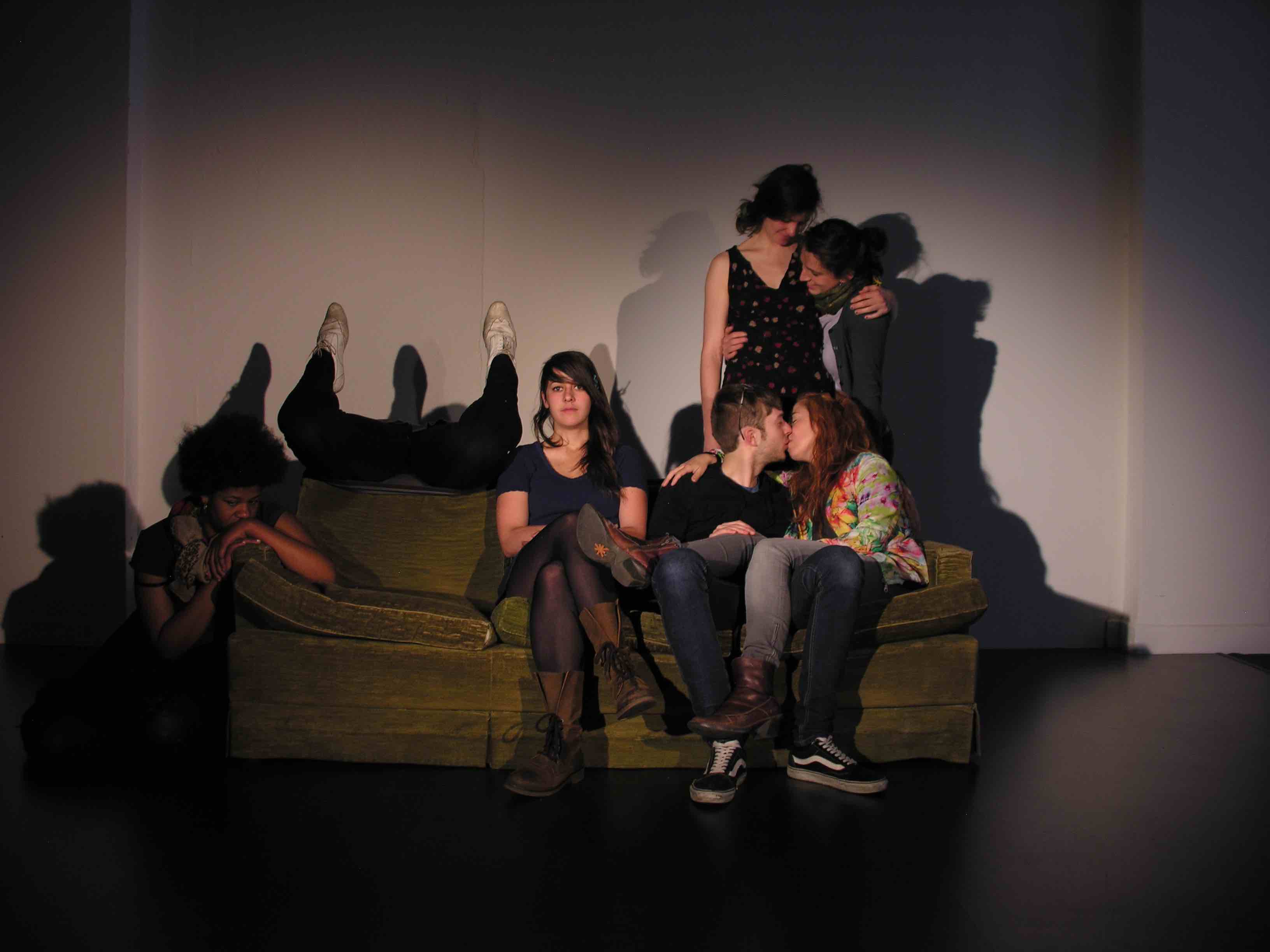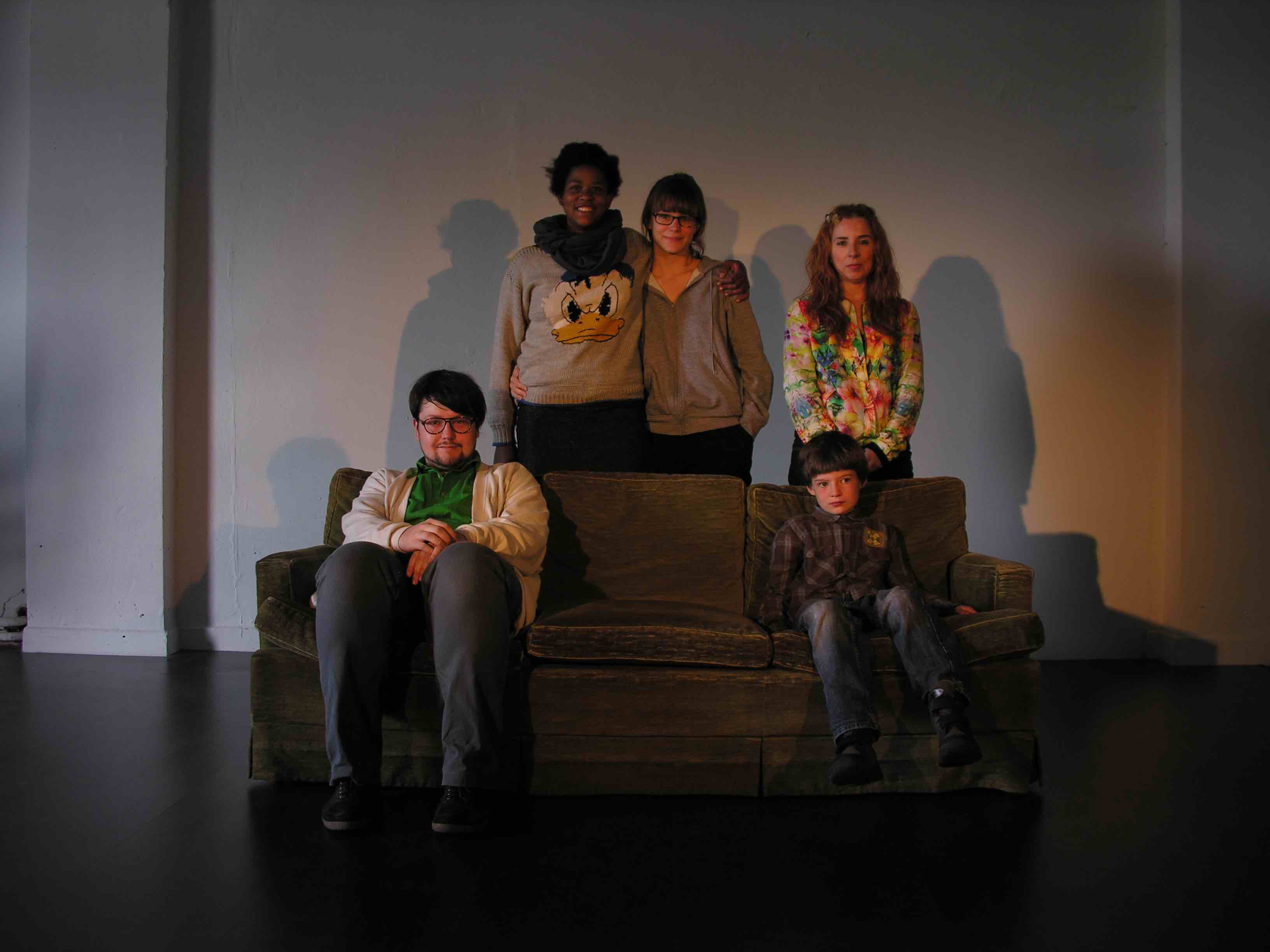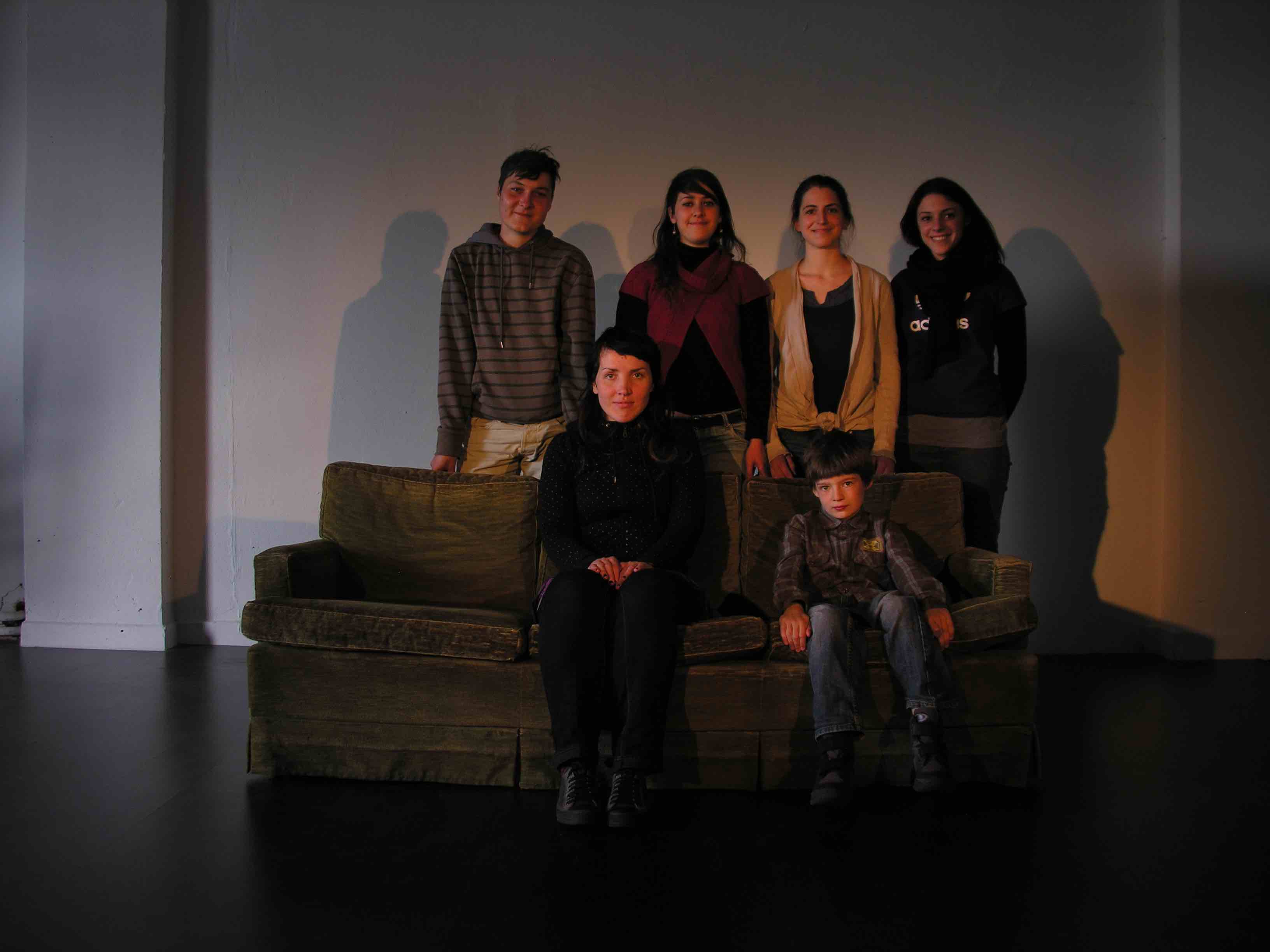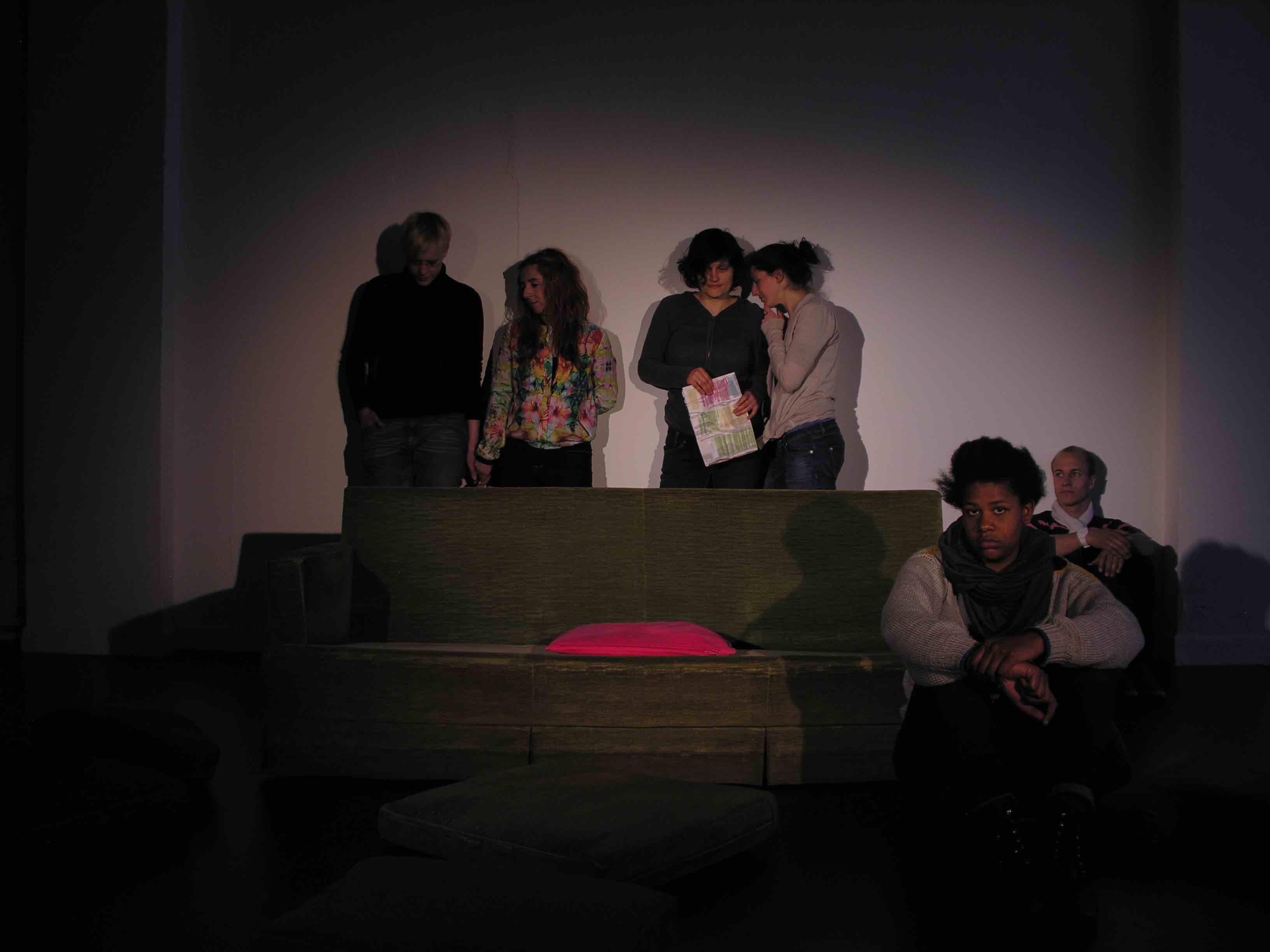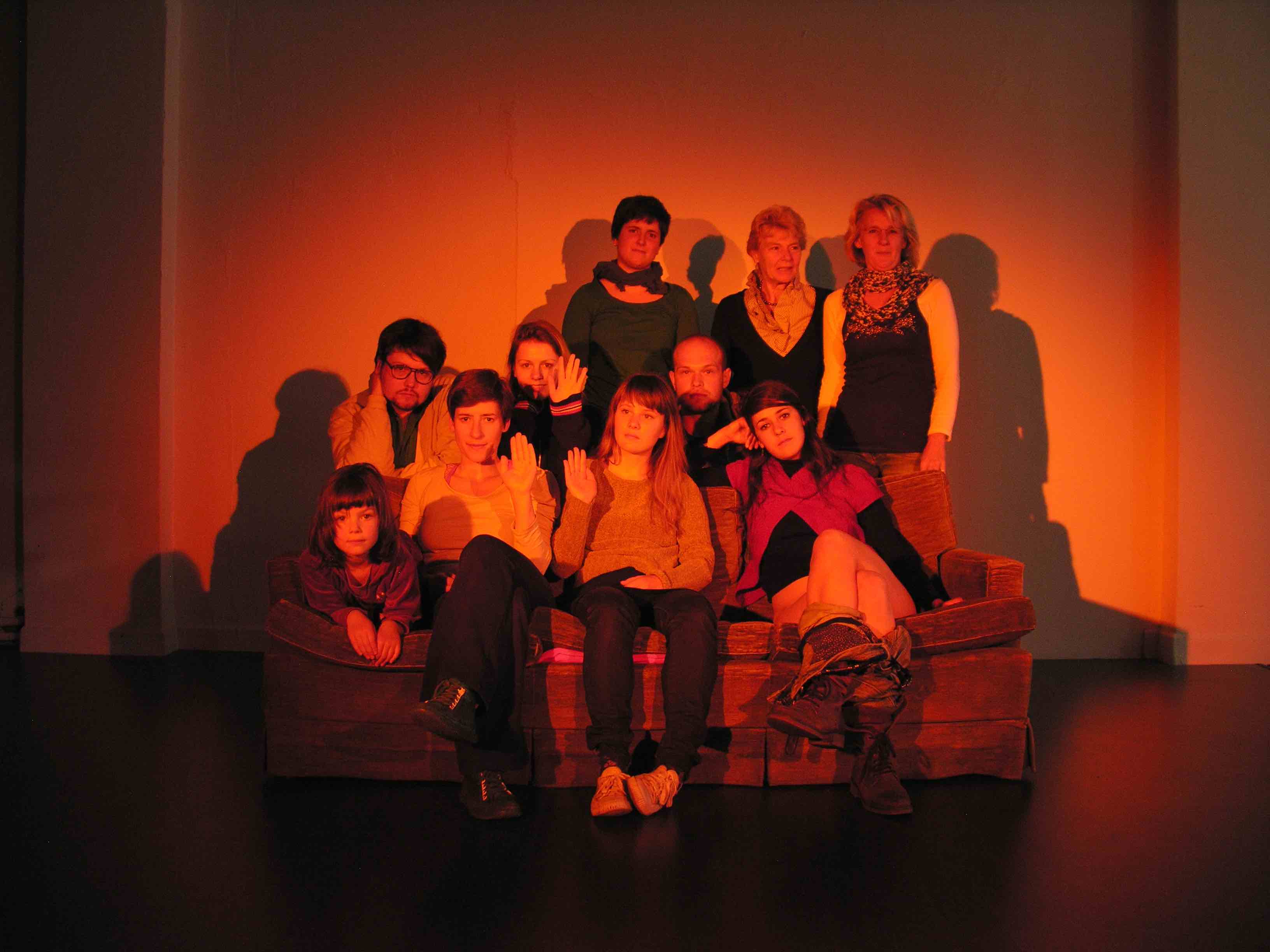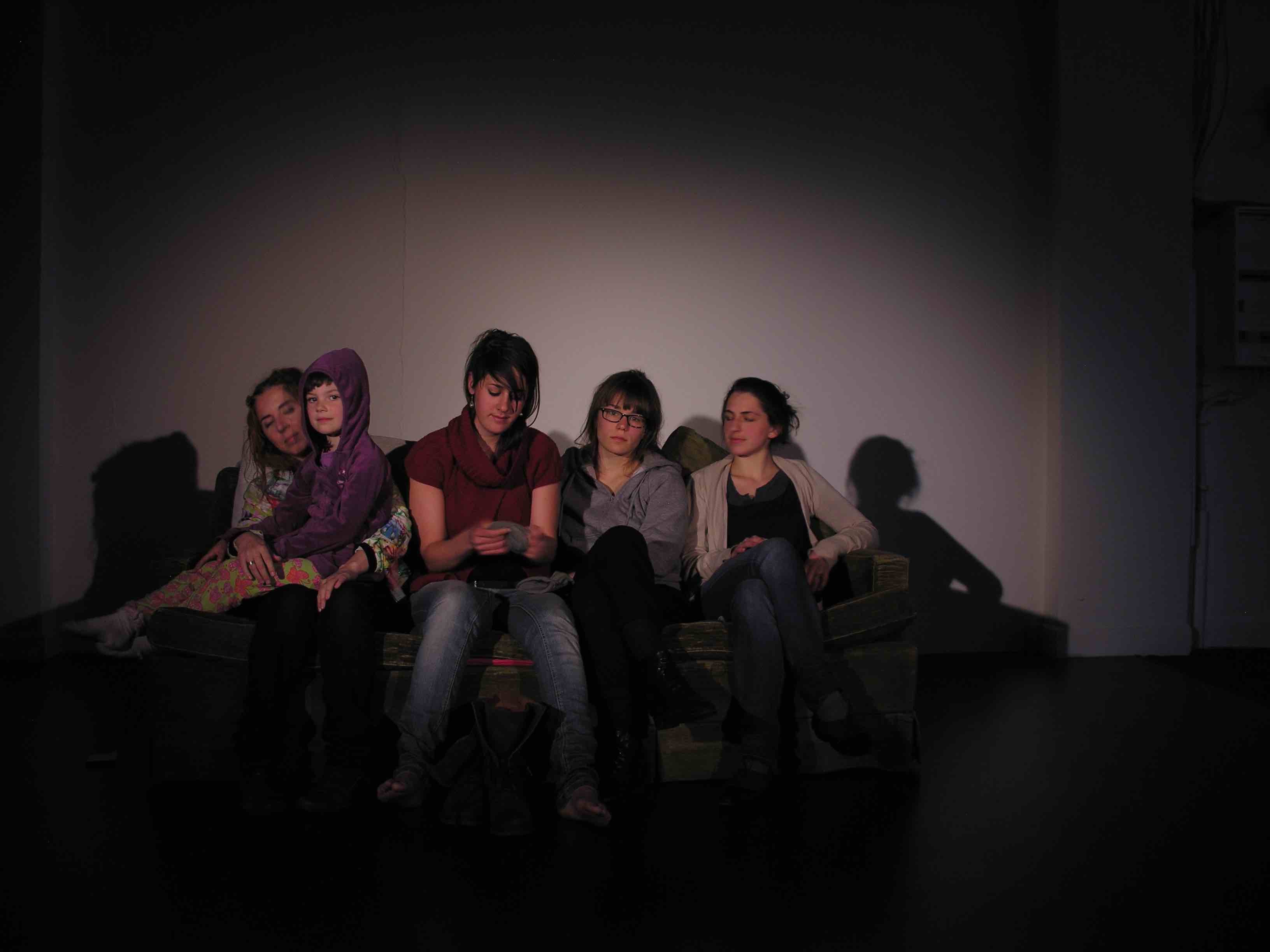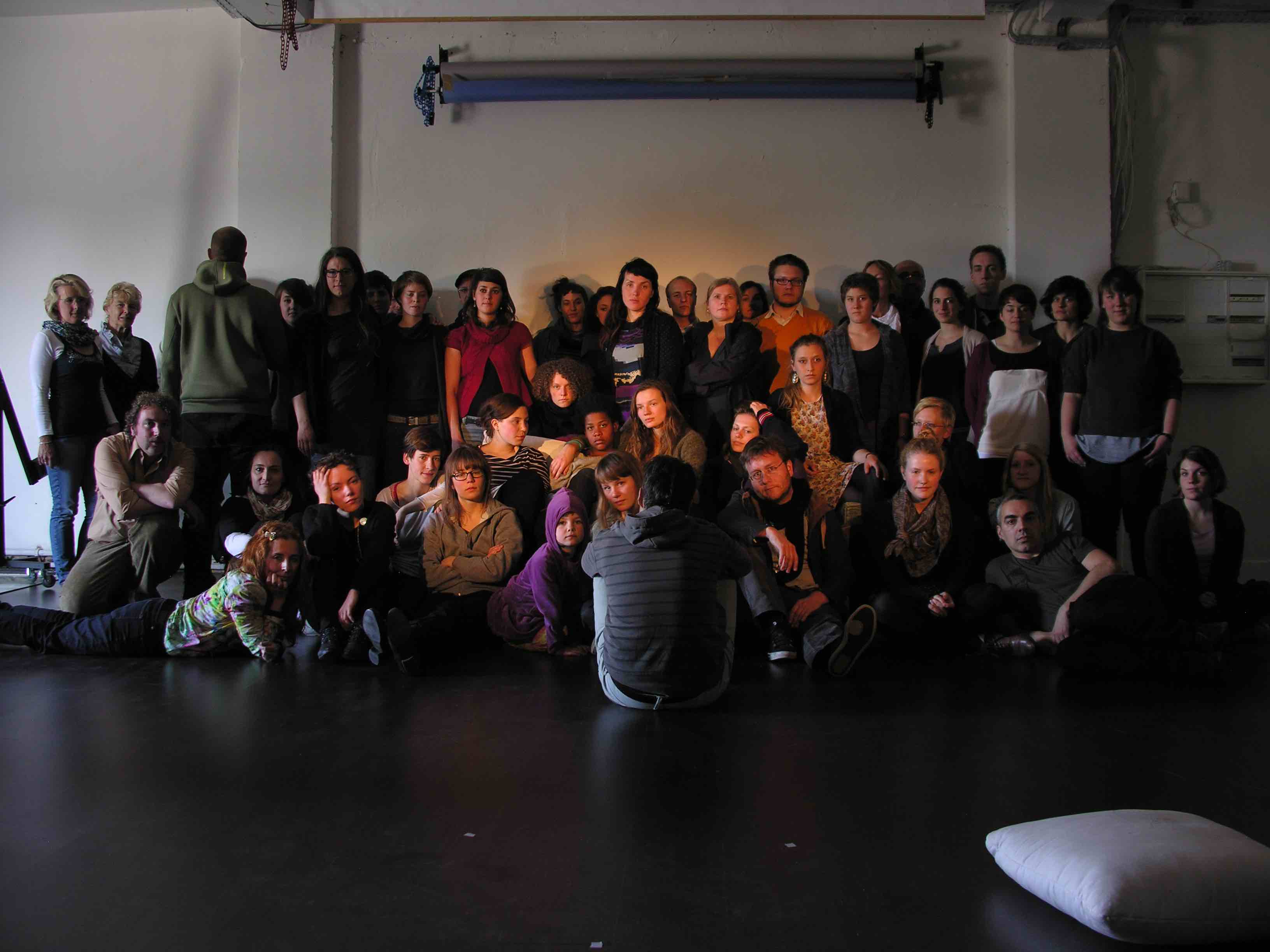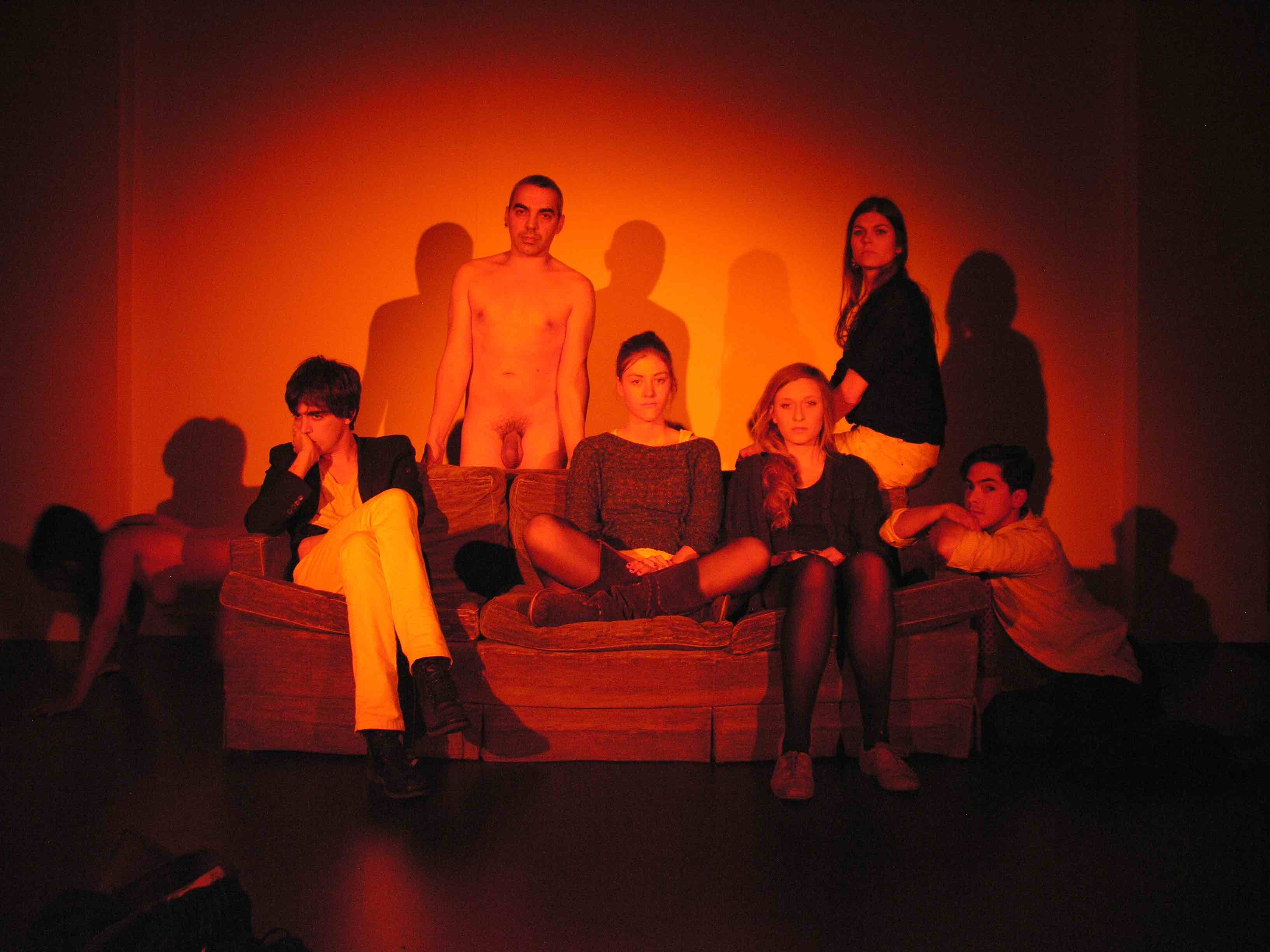UNTITLED, STILL LIFE, 2009
This performance gives continuity to Borralho & Galante's recurring question: the place of the public.
The set is like a photo studio, constituted by one sofa, four light projectors and one digital photograph machine.
The audience doesn’t know who is performer or public. There are five performers infiltrated inside the public. The audience is invited for an initial photograph in scene, with all the public and performers together.
As from this moment, the performance develops in a sequence of photographs taken between the performers and the spectators, creating a “family album”. The audience and the performers can take a photo when they want during the performance. The stories and the situations are supported and transformed through the handling of the sound and the action of the light, generating a permanent construction of new internal dramaturgies, which intensify until the end of the performance.
Concept Ana Borralho, João Galante e Rui Catalão
Artistic direction Ana Borralho & João Galante
Dramaturgy Rui Catalão
Co-creation Ana Borralho, Cláudio da Silva, João Galante, Rui Catalão, Yingmei Duan
Collaboration Antonia Buresi, Francisca Santos, Maria Lemos, Mónica Samões, Yann Gibert
Set design Ana Borralho, João Galante, Rui Catalão
Sound João Galante
Executive production Ana Borralho e Mónica Samões
Production casaBranca
Co-production Útero e DeVIR / CaPa - Centro de Artes Performativas do Algarve
Support Atelier RE.AL, Grande Cena e Galeria Zé dos Bois
Projecto financiado por Ministério da Cultura / DGArtes
Thanks Alaíde Costa, Ana André, Alexander Jenkins, Claudia Nunes, David-Alexandre Guéniot, Duarte Catarre, Fernando Ribeiro, Helena Flor, João Fiadeiro, José Pelicano, Margarida Mestre, Marie Mignot, Melro, Miguel Pereira, Nuno Catarre, Patricia Almeida, Patricia Caballero, Rodrigo, Sofia Campos, Tamara Ascanio, Tatiana, Vasco Célio, Vasco Vidigal
performance duration: 80 min.
Fernando J. Ribeiro, text policopied on Untitled (Still Life) performance, ZDB gallery,Lisbon, 2009
LUST (BEFORE) THE IMAGE
Entering a theater hall corresponds inevitably to make a foray into an autonomous territory, behind which remains only the distant rumor of memories, driven by performative games. Untitle. Still Life evokes the suspension of life, which will be possible only after being submerged in the image domain: from the start the stage acquires the status of an auditorium, but only so that the audience’s gestural arbitrariness be sustained by the eye, at a time omniscient and blind, of the camera. The unveiling of the bodies and their impulses is thus carried out under the protection of a digital display, which legitimizes the genesis of a micro and always contingent community, because its core has a sofa set as constant backdrop to a family album. Still, the distance to the screen itself produced by the image merges with a slow motion, in which the affective involvement and/or erotic can spread. Dilating cinematic moments, the ambience sound and music almost imperceptibly becomes porous the boundaries of the core community. However, “no hay banda”, psychic rhythms are always recorded, filtered, imagined; they are infinitely distant, and at the same time too close in his belonging to the memories and primordial instincts – prior to the formation of any screen.
To place the gestures in stillness, deliver them to a suspension that approaches the silence of fossils corresponds to the inclusion of its agents in images’s timelessness. In Untitled. Still Life that same condition covers the entire scenic atmosphere without, however, never end up happening: if the camera shoots often, spectators-actors are completely unaware of their visual outcome. The simultaneous ubiquity and imminence of photographic records leaves room for desire, that inherently exists in a perpetual holding pattern. Compass measured by the photographic device, which serves as an axis of the scenic space (including the stage and the audience), so as to function as a mediator in the switchable functions of viewer and player. Pervading for the looks and gestures of the actors, the stilllatent in the camera becomes looming the consummation of desire, to always leave it intact, always delivered in its own sphere; here objectualized as a sofa-stage. Libidinal drives and the promised eternity by the net time of digital photography are thus indistinguishable, through poses that give slowness to the audience movements and looks.
Appearing before image, it is as its negative that desire drives erupt, dismantling the evanescence via a fossilization that occurs during the snapshot, in such a way that the performative structure may eventually be overthrown at any time, by any member of the public, ie, where life can trigger exactly when preceding the outbreak of the image, where the banality of the body rips the screen devices, manufactured by visual and audio apparatus. Being screens responsible for the tiny autonomy of human beings, to rip them corresponds always to punctual actions and, as such, to the development of a relentless tilt between inside and outside, so that to see and to be seen acquires an irreducible reversibility, that constitutes the genesis of lust.

